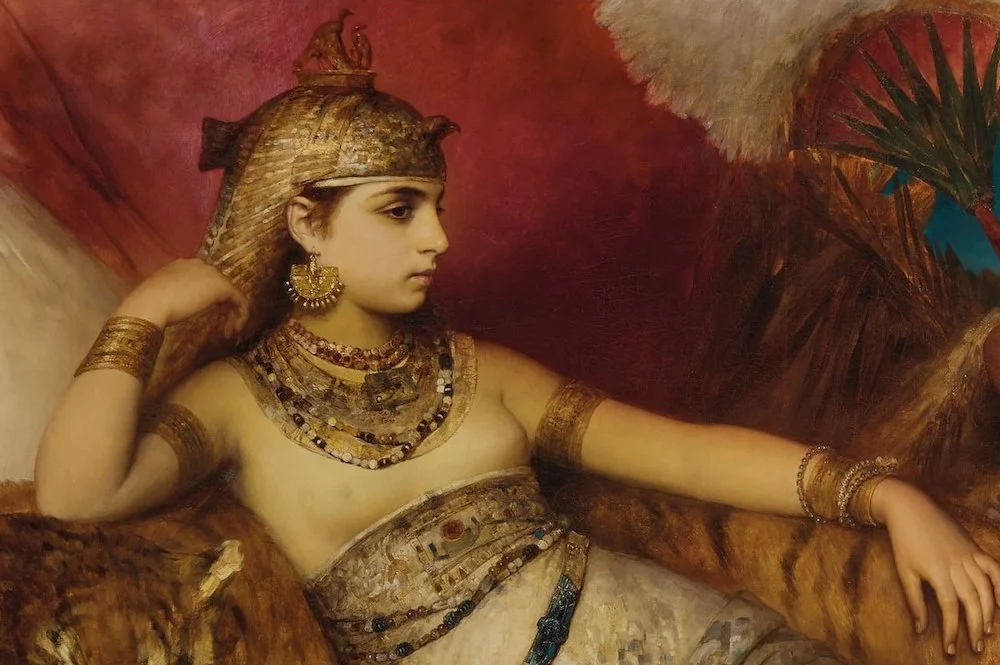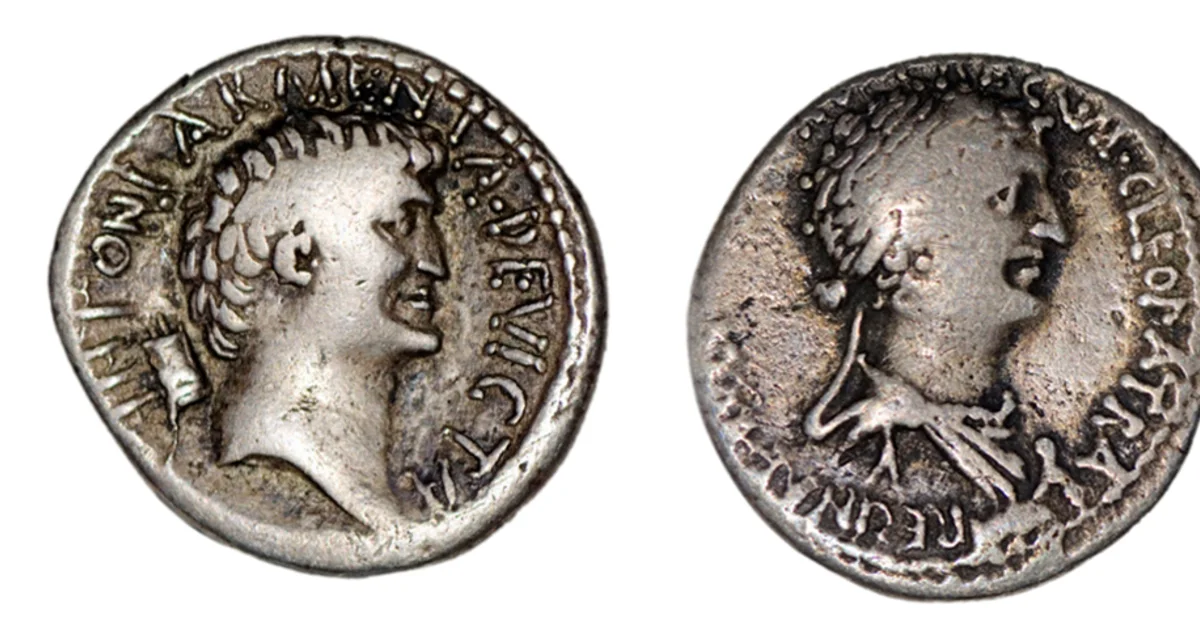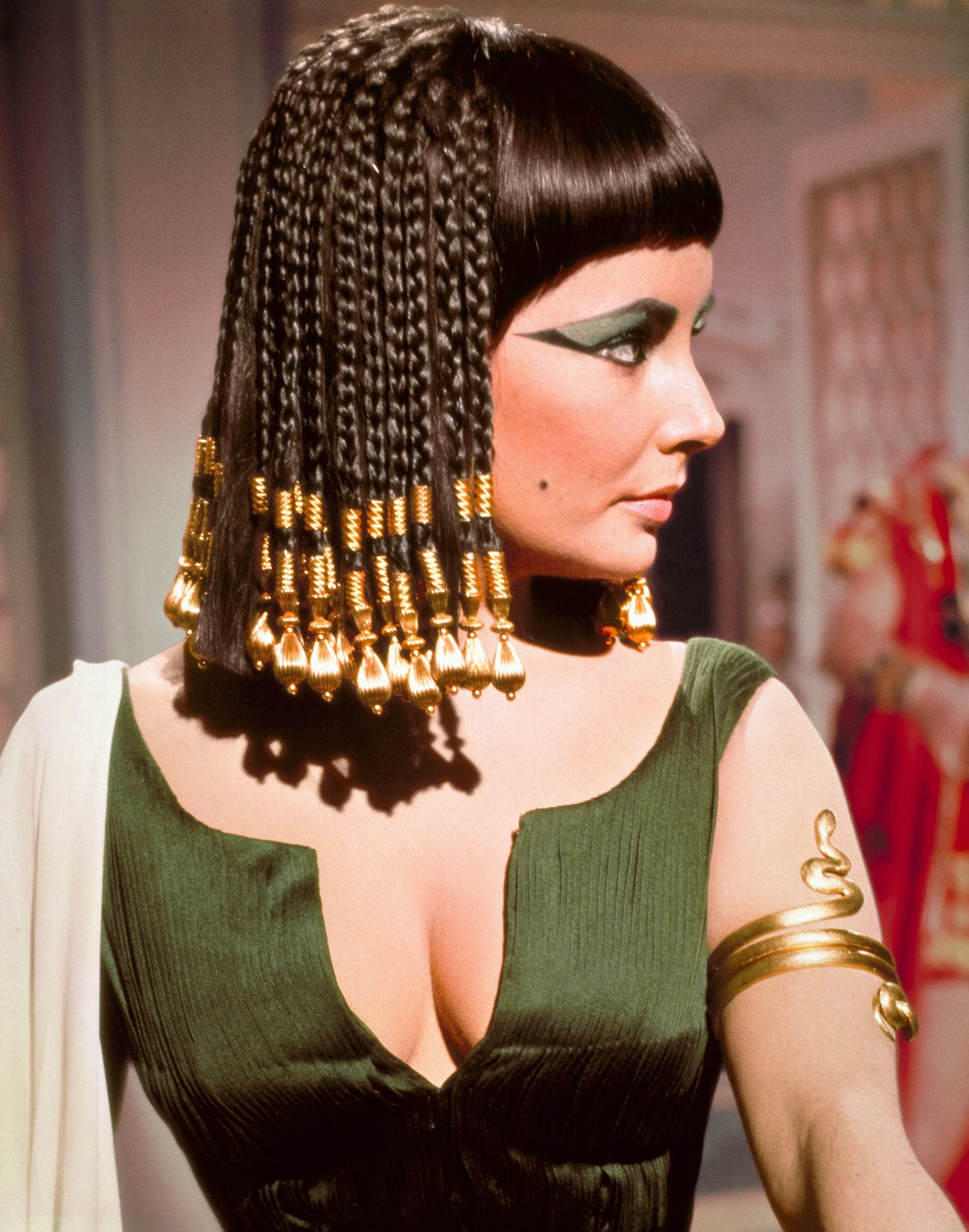Cleopatra VII Thea Philopator, or Cleopatra, was the Egyptian queen well-known in history and drama as the lover of Julius Caesar and later as Mark Antony’s wife. She took the throne after her father’s death and ruled successively with two of her brothers and son. After the Roman armies of Octavian defeated their combined forces, Antony and Cleopatra committed suicide, leaving Egypt under Roman domination.
Cleopatra was a queen in all aspects. She actively influenced Roman politics at a crucial period and represented it like no other woman of antiquity. She was the prototype of the romantic femme fatale.
History talks a lot about the beautiful and seductive appearance of the queen. She has also been depicted as a great beauty on the silver screen who seduced the Roman leaders. However, historians do not know a lot about how the queen looked.
What Did Cleopatra look Like?
Only ten coins from the reign of Cleopatra have survived in a good, however, not mint condition. Such coins hold significance for they provide excellent records of the faces of many monarchs.
Though much information cannot be found on Cleopatra’s appearance, it is presumed that she was stunningly beautiful. During her life, she embarked on love affairs with the two most powerful Romans – Julius Caesar and Mark Antony and charmed them with her beauty.
It is said that the queen met Julius Caesar in a spectacular fashion when he came to Egypt in 48 B.C. At that time, Cleopatra was embroiled in a power struggle with her brother. She sensed an opportunity and wrapped herself into a carpet to sneak into his chambers. Afterward, she came tumbling out, asking for his help. Caesar was so smitten and captivated by Cleopatra that he agreed to help her. Cleopatra also gave birth to his son, Caesarion.
Unfortunately, Caesar was assassinated in 44 BC. After it, Cleopatra trained her sights on Mark Antony.
Cleopatra’s looks Described By the Ancient Greek and Roman Historians
Many Roman historians describe Cleopatra as beautiful. It might seem flattering today, but it was certainly not the best description during ancient times.
Cassius Dio describes Cleopatra meeting Caesar as “brilliant to look upon and to listen to, with the power to subjugate everyone, even a love-sated man already past his prime.” He also describes Caesar as “completely captivated” when he first meets the royal. Dio declares Cleopatra to be a surpassing beauty.
Another historian, Plutarch, puts for a more complicated view of what the royalty looked like. The Greek writer highlighted Cleopatra’s meeting with Mark Antony and noted that she was going to visit Antony at the very time when women have the most brilliant beauty and are at the acme of intellectual power. However, he also stated that her actual face was less flattering.
“For her beauty, as we are told, was in itself not altogether incomparable, nor such as to strike those who saw her, but converse with her had an irresistible charm, and her presence, combined with the persuasiveness of her discourse and the character which was somehow diffused about her behavior towards others, had something stimulating about it.”
He continued, “There was sweetness also in the tones of her voice, and her tongue, like an instrument of many strings, she could readily turn to whatever language she pleased.”
The Romans Did Not Like Cleopatra
Although Cleopatra was beautiful, the Romans disliked and distrusted her. It is because she was a powerful woman and also a foreign entity. The instances of dislike for Cleopatra among the people were drawn by a few writers and poets.
For instance, the first-century poet, Horace, described her as “a crazy queen plotting to demolish the Capitol and topple the Roman Empire.”
During her time, many male leaders portrayed her as an evil whore who could manipulate powerful men if they were not careful. This misogynistic depiction also served as a distraction from the many other qualities that she possessed, such as her ability to speak many languages, skills as a politician, et al.
Perhaps, the Roman males couldn’t take a woman leading her empire and wanted to taint her image in all possible ways.
Many people in modern times claim that Cleopatra was the ultimate seductress. However, this image may be nothing more than the propaganda that the Roman Emperor Octavian pushed and spread. He wanted to portray Antony, his rival, as someone who had fallen into the trap of a foreign femme fatale.
There is A Statue of Cleopatra
Only a few monuments of Cleopatra remain to date. It is because Octavian Augustus, who became the first emperor of Rome after Caesar’s assassination and Antony’s suicide, destroyed Cleopatra’s reputation and took control of Ptolemaic Egypt. Cleopatra, however, did not let Augustus lead her as a prisoner through the streets of Rome in a victory parade. Instead, she managed to commit suicide and got the last laugh.
You can explore the Black Basalt Statue of Cleopatra at the Hermitage Museum in St. Petersburg, Russia, to see what the queen looked like.
Egyptian Stone Workers’ Images of Cleopatra
There is a series of pictures of Cleopatra, showing her as a popular cultural image, and Egyptian stone workers have portrayed her.
The Stars who Played Cleopatra
Two actresses, Theda Bara and Elizabeth Taylor, have played Cleopatra on screen.
Theda Bara played the alluring Cleopatra in the silent movie. Elizabeth Taylor and her twice-husband, Richard Burton, brought the love story of Antony and Cleopatra to screen in the 1960s. The movie was welcomed by all and even won four Academy Awards.
There’s a Coin of Cleopatra and Mark Antony
The relics of Cleopatra also include her and Mark Antony’s coins. Only ten coins have survived in good condition from that era. In the coin, both look very similar to each other. It caused many historians to question if the image of the queen is really a true likeness.
Other Relics of Cleopatra
You can see a bust of a woman thought to be Cleopatra displayed at the Antiken Museum in Berlin. You can even buy its replica from the Museum Company.
The Bas Relief of Cleopatra was once displayed in Paris’ Louvre Museum. It dates from the third to the first centuries B.C.
Keep in touch for more.







Another actress played Cleopatra, Claudette Colbert. I’m shocked at the omission, especially since Ms. Colbert was so famous.